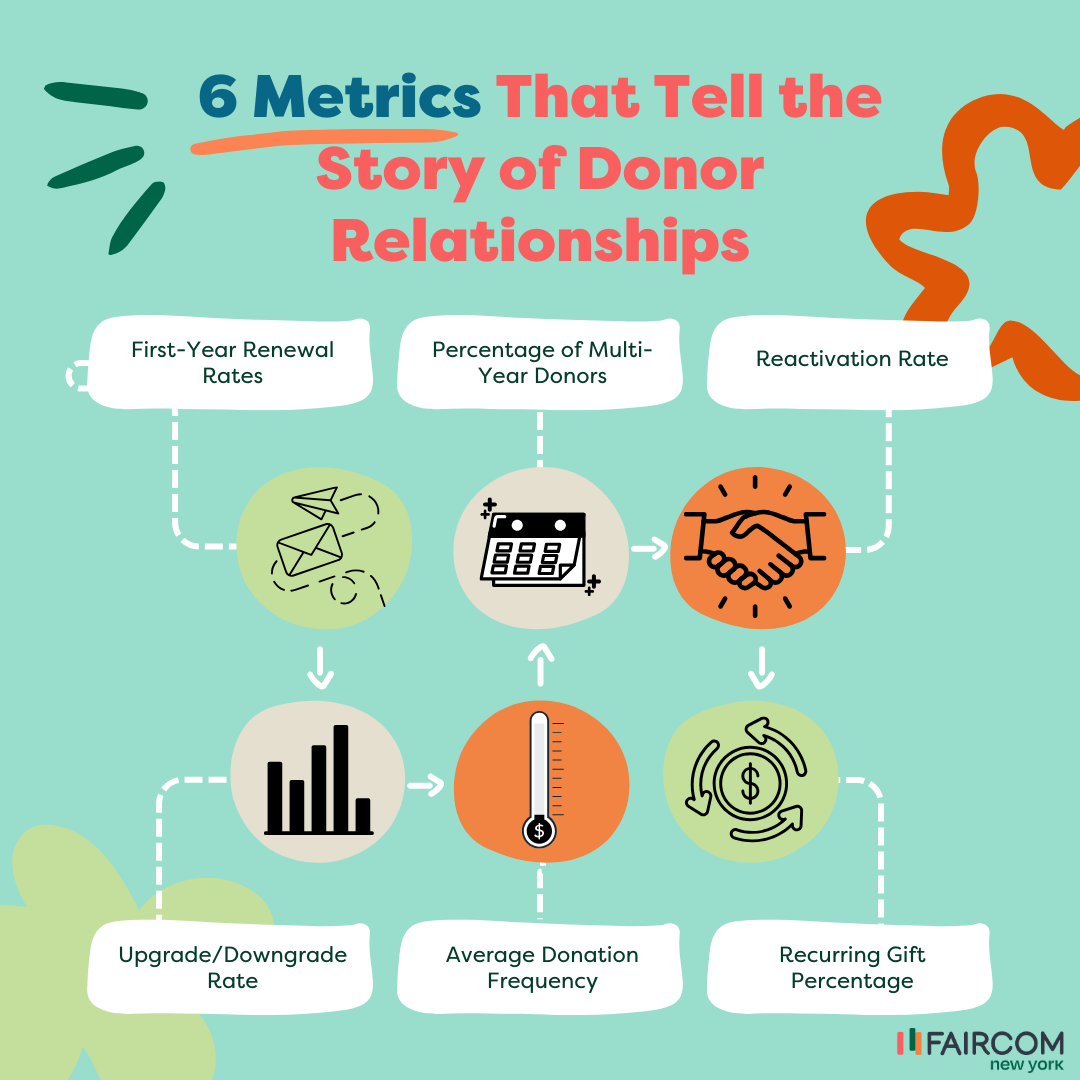Here’s something that might surprise you: 85-90% of most nonprofits’ funding comes from loyal donors who stick with them year after year. These supporters aren’t just keeping the lights on – they’re the backbone of all you do and the reason you can amplify your impact. Don’t get us wrong. You want to pour big energy into finding new donors, but make sure to give ample attention to keeping your existing supporters happy and engaged.
Let’s dive into the numbers that really matter when it comes to keeping your donors close. Think of these metrics as your early warning system – checking them regularly will help you spot potential issues before they become problems.
The Numbers That Tell the Story of Donor Relationships
How Many First-Time Donors Come Back?
This one’s huge—it tells you how many of your new donors liked their first experience enough to give again. Think of it as a report card for your welcome strategy! By keeping an eye on this number, you can tell if your thank-you notes, updates, and early communications are hitting home. When you make new donors feel truly appreciated and connected to your cause from day one, you’re building relationships that stand to last for years.
Who Are Your Long-Term Friends?
Looking at how many donors have stuck with you for multiple years isn’t just about numbers—it’s about understanding who your true believers are. These good folks are the lifeblood of your org. They’ve made supporting your cause part of their lives, and that’s something to celebrate! Understanding what keeps them coming back helps you create more of these lasting relationships.
Bring Old Friends Back Into the Fold
Sometimes supporters drift away, but that doesn’t mean they’re gone forever. Reconnecting with lapsed donors can be more effective (and less expensive) than finding completely new ones. The key is understanding why they stepped away and showing them they’re still valued. Once they’re back, make sure to keep that spark alive and work to nurture the relationship. Fallen away donors who come back have a higher lifetime value than newly acquired donors.
Understanding Changes in Giving
When donors increase or decrease their giving, they’re telling you something important. An increase often means they’re feeling more connected to and confident in your work. A decrease might mean it’s time to check in and consider adjusting your approach. Keep in mind that a change in giving behavior may not be about you at all but about your donor’s current circumstances. So be sure to give them options that accommodate the moment. For example, if a donor can’t maintain their $100 gift, offering them the option to give $35-$75 keeps them connected at a level that works for them.
How Often Do People Give?
Understanding when and how often your donors give helps you stay in tune with their giving patterns. Do they give quarterly, or maybe only once a year? The more you know about your donors’ giving habits, the more effectively you can time your solicitations and relationship cultivation materials. Don’t forget to analyze your file for potential monthly supporters who will be most open to supporting your org as part of their regular giving routine.
The Power of Regular Giving
Speaking of monthly supporters, keep this in mind: When donors set up recurring gifts, it’s as if they’re saying, “I’m in this with you for the long haul.” Their steady support is an invaluable gift to your organization’s good work and helps you plan for the future with confidence. Take time to understand what motivates these committed supporters—their stories might help you identify others who’d love to become regular givers, too!

Remember, these metrics aren’t just numbers on a spreadsheet — they’re indicators of how well you’re connecting with people who care about your cause. Properly analyzed, they can provide key insights to help you understand how to better serve your community of supporters.
In Part 2 of this post, we’ll dig deeper into making these insights work for you. Stay tuned!



